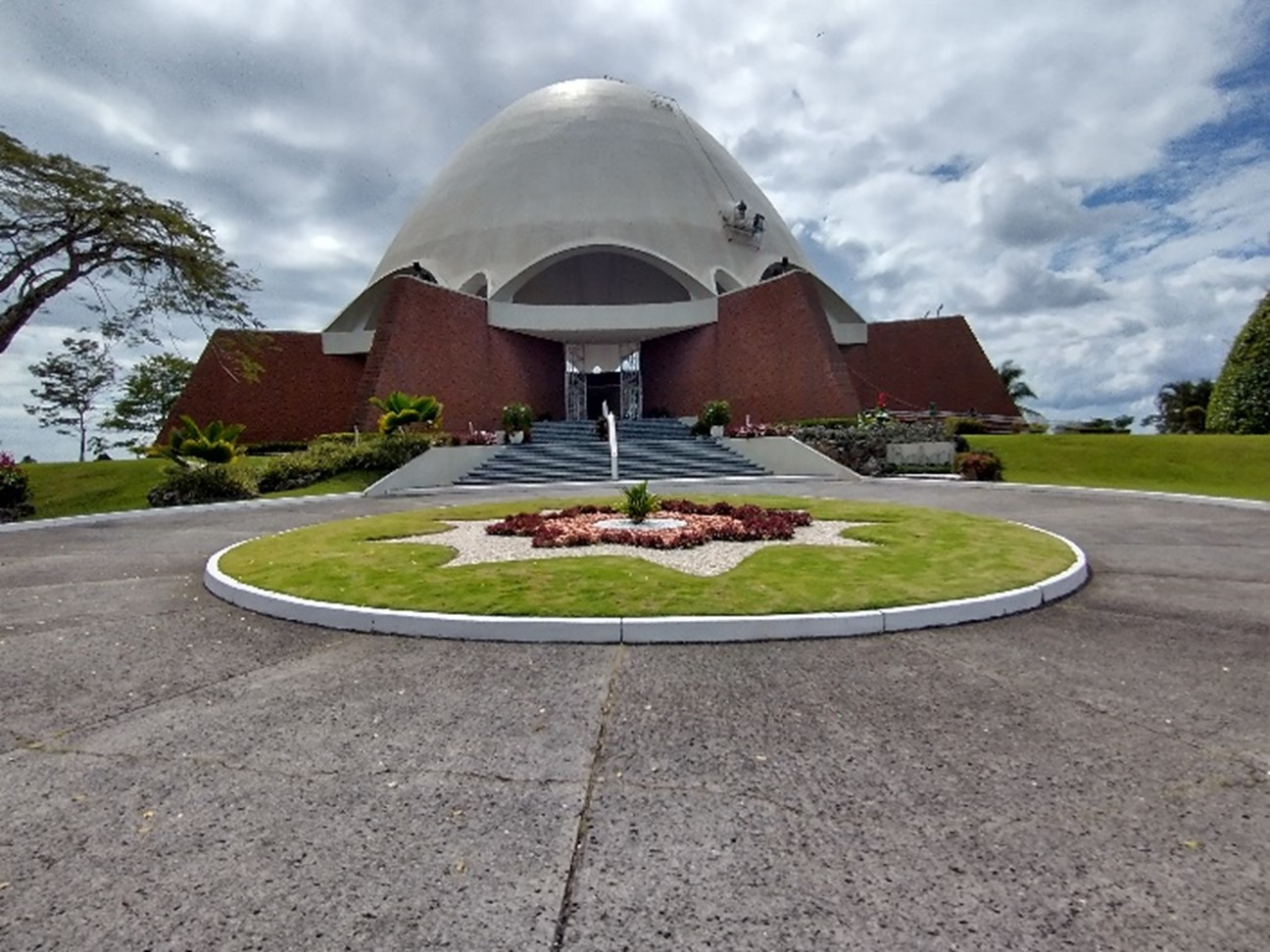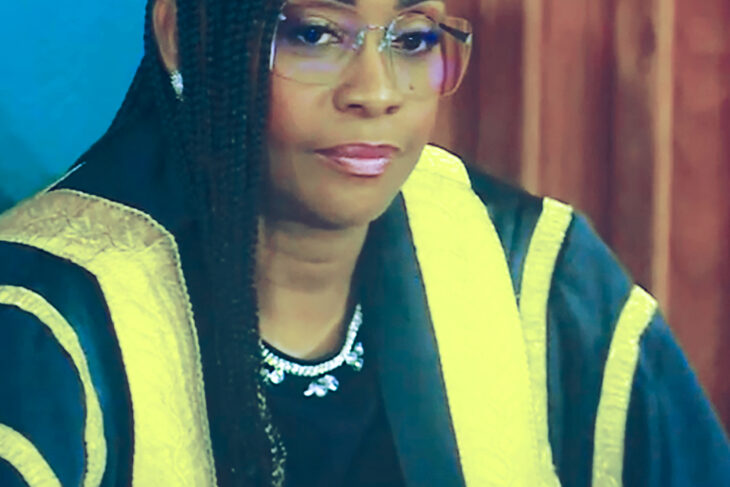
We have arranged to be picked up at our hotel in Panama City for the ride to the Bahá’i Temple. Our guide for the day is the National Bahá’i Treasurer, Ovidio Carrasco. By profession he is an international travel agent who guides foreign visitors around the city. He speaks French, German, English and Spanish. On our way he gives us more information about the American occupation of the city and its control of the canal. We see the red roofs of former military housing that is now home to locals and some expats. Even though the buildings are 100+ years old, Ovidio says they are in good condition. They were built to last.
Bahá’is are members of the newest of world religions with temples in countries around the world. The one in Panama was dedicated 50 years ago. A couple of months ago we were able to join a Zoom commemoration of the 50th anniversary of the opening. There were people on the call from Central America, the United States, Europe, Australia and the Caribbean. A few of the callers identified themselves and told stories during breaks in the presentations.
It is a short ride to the temple from our hotel by the sea. We first arrive at an administrative building where the national assembly conducts business, and visitors are greeted. Upstairs there is a lovely large room where the commemoration celebration took place. Everywhere are representations in displays or plaques that reflect the importance of unity in the words of the founders of the faith. No visitor would leave untouched by symbols that promote world peace.
Everything about the administrative building is dignified. We are assigned to a guide who speaks some English, but communication is difficult. Between his English and my small amount of Spanish we have a rather interesting discussion about the importance of having a universal language. He quickly discounts Chinese or Spanish as a possibility and we agree that English may be the most popular choice. But before, we talk a bit about the movement that occurred several decades ago to promote Esperanto.
I reflect on the lessons in Esperanto that we took with Dee Harris in Jamaica in the 1980’s. That’s one of the experiences that I first came to connect with my husband Gerry. It was challenging and not a language that we ever used to converse. Little of those lessons persists with us today. I doubt that Esperanto is more than a pipe dream. It certainly seems more practical from a business and traveler’s perspective to focus on English, both written and spoken.
From the administration building it is a short walk up to the Temple. The grounds are beautifully sculpted with tropical plants and flowers. A paved walkway guides us around the temple to the main entrance. At the front of the building is a garden in the form of a nine-pointed star. It is very peaceful and serene here. A wonderful place for prayers and reflection. People of all faiths come here for meditation and spiritual renewal.
The temple sits on a small mountain looking down on the city which was beach and sea prior to 1995. The land was filled in by 1995 to prepare for erecting buildings that house hotels and businesses. These tower above the sea with as many as 86+ floors. Our own hotel has 27 floors. The height of the buildings is not a concern because there is no history of flooding, hurricanes or earthquakes here.
Across the manicured lawns we also look down on lush green valley, a few mountains in the distance and small groups of houses. A wide highway runs from the bottom of the temple into the city. It feels as if we are on top of the world.
After we circumvent the temple and admire the views, we come full circle to the entrance. The cream-colored dome is made of marble from Italy and the bottom is an orange mosaic pattern of tiles that were designed in Japan. The curvature of the building and grace of its surroundings invite us into an open space where we are told that cameras are prohibited. It is a space for reverence and quiet. A worker silently sweeps the floors and polishes the doors as we sit on wooden benches in a theater-like formation to say prayers. Not even an echo of the workers’ footsteps interrupt the serenity of our thoughts.
This particular temple is perfectly located to highlight the unity of the world. The canal actively connected East and West, and Panama connects North and South. The cultural diversity of the country brings people from all over the world together. A symbol for the Bahá’is is the nine-pointed star which reflects unity and perfection. Bahá’is recognize the connection between all of the major religions of the world: One God, One Religion and One Humanity.



